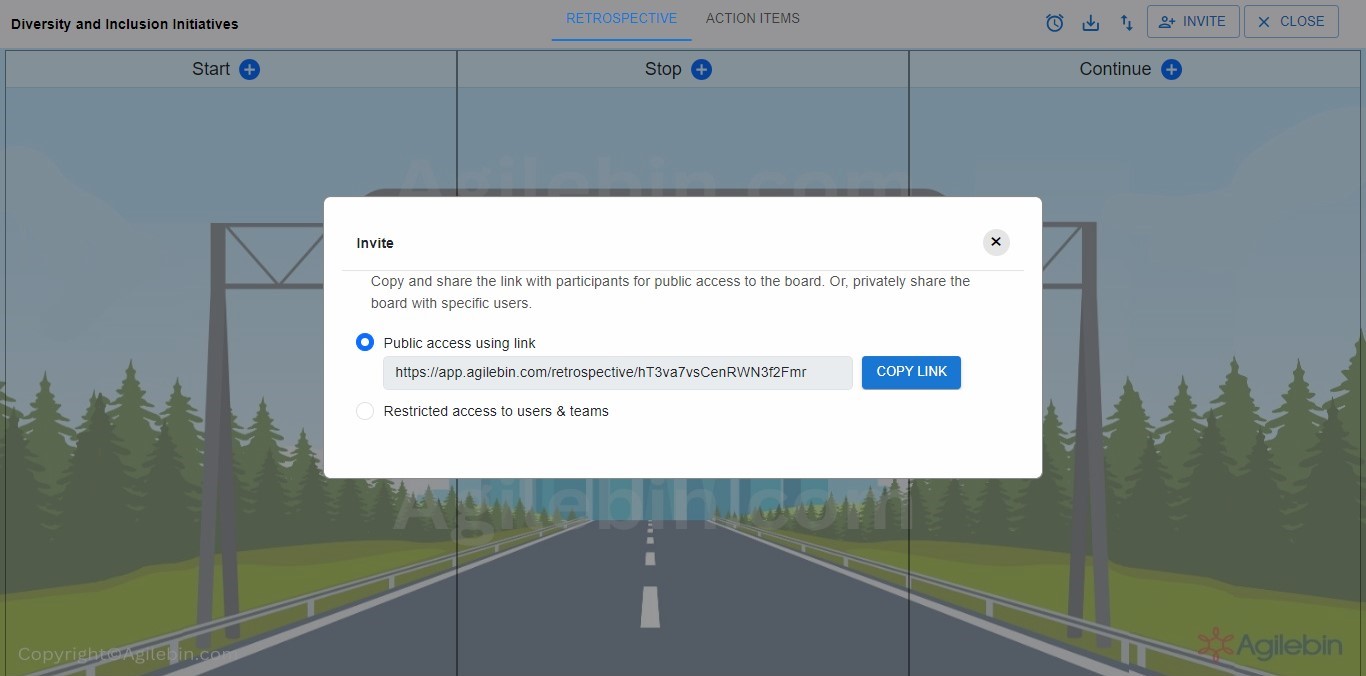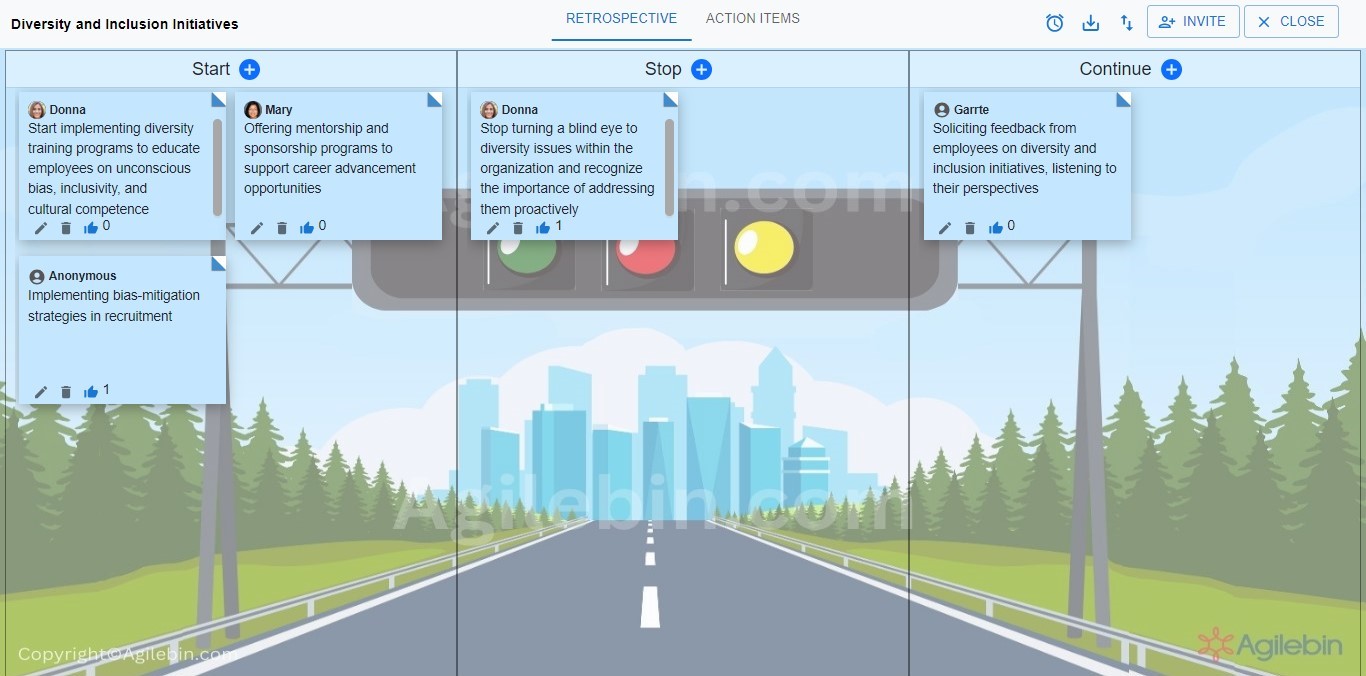Start Stop Continue Retrospective
A retrospective meeting where teams reflect on what to start, stop, and continue doing to improve processes

What is Start Stop Continue Retrospective?
A Start Stop Continue retrospective is a structured meeting format commonly used in Agile and Scrum methodologies for continuous improvement. During this retrospective, team members reflect on recent activities, processes, and behaviors to identify what should be stopped, started, and continued to enhance effectiveness and efficiency. The goal is to foster open communication, collaboration, and a focus on actionable items that can lead to positive changes in team dynamics and project outcomes. By examining past experiences and planning for the future, teams can iteratively improve their performance and adapt to evolving challenges and requirements.
How to Run Start Stop Continue Retrospective?
A Start Stop Continue retrospective involves the following steps
- Set the Stage: Begin by explaining the purpose of the retrospective and creating a safe environment for open discussion. Emphasize that the goal is to identify actions for improvement.
- Gather Data: Reflect on recent activities and collect feedback from team members on what should be stopped, started, and continued. Encourage everyone to share their perspectives openly.
- Generate Insights: Group similar feedback together and identify common themes or patterns. Discuss the reasons behind each suggestion and prioritize them based on their potential impact.
- Decide on Actions: Facilitate a discussion to determine actionable items for each category (Start, Stop, Continue). Focus on concrete steps that can be taken to address the identified issues or improve existing practices.
- Create an Action Plan: Document the agreed-upon actions and assign responsibilities and deadlines to ensure accountability. Make sure everyone understands their roles in implementing the changes.
- Follow Up: Monitor the progress of the action items in subsequent retrospectives and team meetings. Celebrate successes and adjust strategies as needed to achieve the desired outcomes.
Columns in Start Stop Continue Retrospective
A Start Stop Continue retrospective typically involves three main columns:
- Stop: In this column, team members list activities, behaviors, or processes that they believe should be stopped or discontinued. These may include practices that are no longer effective, impediments that hinder progress, or activities that waste time and resources.
- Start: This column is used to capture ideas for new initiatives, practices, or behaviors that the team believes should be started or implemented. These could be improvements or innovations that address existing challenges, capitalize on opportunities, or enhance collaboration and productivity.
- Continue: In this column, team members identify activities, practices, or behaviors that are currently working well and should be continued or sustained. These could include successful strategies, effective communication methods, or positive team dynamics that contribute to overall success.
When to do a Start Stop Continue Retrospective
A Start Stop Continue Retrospective can be conducted at various stages of a project or within different contexts to facilitate reflection, learning, and improvement. Below are some scenarios and situations where a Start Stop Continue Retrospective is particularly valuable:
Scenarios for conducting a Start Stop Continue Retrospective
- End of Iteration: Conducting the retrospective at the end of an iteration or sprint allows the team to reflect on their recent work and identify areas for improvement before moving on to the next phase.
- Project Milestones: Performing the retrospective at key project milestones provides an opportunity to evaluate progress, address any emerging issues, and make necessary adjustments to ensure project success.
- Team Transitions: When new team members join or existing members leave the team, conducting a retrospective can help facilitate a smooth transition by addressing any challenges or concerns and establishing clear expectations moving forward.
- Process Changes: After implementing significant process changes or adopting new methodologies, conducting a retrospective allows the team to assess the effectiveness of the changes, identify any unintended consequences, and make adjustments as needed.
- Periodic Reviews: Regularly scheduled retrospectives, such as monthly or quarterly reviews, help maintain a culture of continuous improvement by providing ongoing opportunities for reflection, feedback, and adaptation.
How can you conduct a Start Stop Continue retrospective with Agilebin?
Effortlessly conduct a Start Stop Continue retrospective with Agilebin's ready-to-use template!
Why Agilebin's template? Because it provides a realistic and immersive experience, making your Start Stop Continue retrospective feel authentic and meaningful. With Agilebin's ready-to-use template, you'll feel like you're navigating through the actual process, allowing for a more effective and insightful retrospective session.
Choose Start Stop Continue retrospective template in Agilebin
Choose the Start Stop Continue Retrospective template from Agilebin's collection of retrospective templates. This template is specifically designed to facilitate the Start Stop Continue Retrospective process, providing a structured framework for your team's reflection and improvement discussions
Invite team members to participate in the retrospective session
Invite team members to participate in the retrospective session by adding their email addresses or sharing the session link directly with them. You can choose between public access using a link, allowing anyone with the link to join, or restricted access, limiting participation to specific users or teams.

Facilitate Discussion with Sticky Notes
Agilebin offers pre-defined columns for the Start Stop Continue Retrospective, including "Start," "Stop," and "Continue." Participants can add sticky notes to each column during the retrospective session, sharing their feedback, observations, and suggestions
